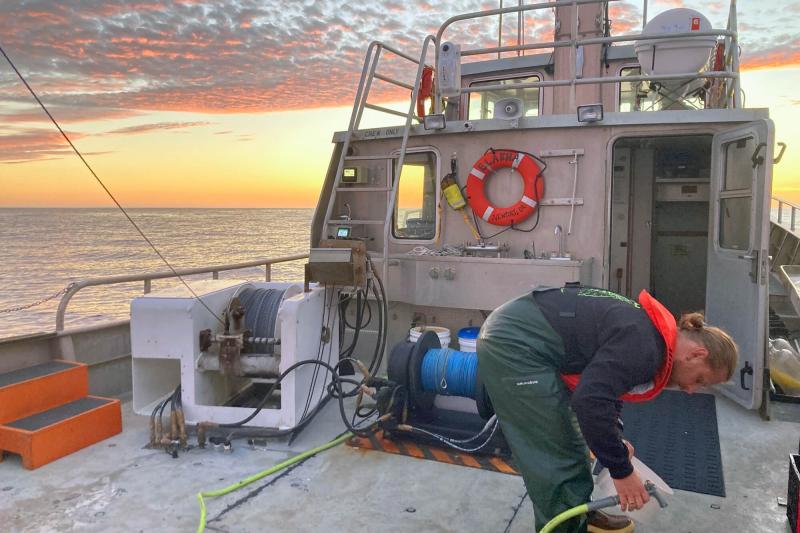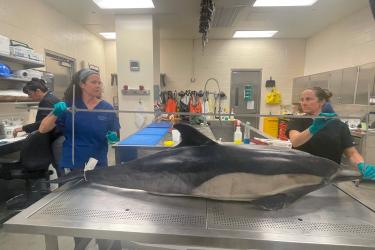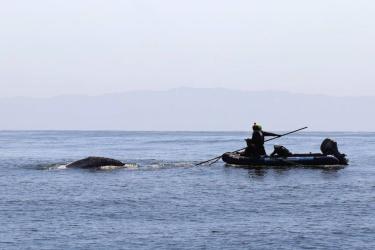How did climate change impact ocean waters off the U.S. West Coast this past year? What does that tell us about the growth and survival of juvenile salmon for the years to come?
A Potentially Tough Year Coming for Pacific Salmon
NOAA’s Northwest Fisheries Science Center researchers track ocean ecosystem indicators off Newport, on the Central Oregon Coast. This year, they showed varied oceanographic shifts in the northern California Current.
A strong El Niño event dominated the Pacific Ocean during the winter of 2023–24. It brought warmer-than-average sea surface temperatures and the lowest juvenile salmon prey indicators of the time series to the northern California Current. However, the picture changed in summer. Wind-driven upwelling delivered cooler-than-average ocean temperatures, and higher-than-average biomass of lipid-rich copepods. This signaled better conditions for juvenile salmon.
The contrasting effects of warm winter and cool summer ocean temperatures make predicting the overall impact on the marine ecosystem challenging, especially for juvenile salmon.
“2024 started out looking like a pretty tough year for young salmon,” said Jennifer Fisher, a research fisheries biologist at the Science Center’s Newport Research Station. “Warm ocean temperatures during the winter altered the food web, meaning the types of tiny fish that juvenile salmon prefer were scarce. This could significantly impact the survival and growth of these young salmon during their crucial ocean phase.”
Salmon Prey Lowest in the 27-Year Time Series
One of the most significant impacts was observed in the winter ichthyoplankton community. Researchers noted that wintertime larval fish indicators, a proxy for future juvenile salmon prey, were the lowest in the 27-year time series. Coincidentally, they also observed an increase in less-nutritious southern copepods, typically associated with warmer waters. Together, these factors indicated potentially poor feeding conditions for juvenile salmon when they first enter the ocean.
A Long-Running Record of Ocean Conditions and Salmon Survival
The Newport Research Station’s team regularly monitors ocean conditions along the Newport
Hydrographic Line: one of the best records of ocean change on the West Coast. Scientists have surveyed the line twice-monthly (weather permitting) for 27 years. The information collected reveals patterns and insights into how the ocean changes, particularly how the changes are likely to affect the salmon experiencing those conditions.
The team tracks 16 key ocean indicators, including:
- Seawater temperature
- Salinity
- Number and types of copepods (tiny crustaceans that reflect the habitat quality for juvenile salmon when they first enter the ocean)
Decades of monitoring have demonstrated that these ocean indicators correlate with juvenile salmon growth and survival, and how many adults will return to rivers to spawn.
This year's ocean conditions were ranked 18 out of 27, suggesting moderate-to-poor conditions for young salmon.
“These are factors that influence the health and survival of salmon, so we can often connect that with how salmon will fare,” Fisher said. “Right now, there are some mixed signals, reminding us how important it is to continually track ocean conditions and try to understand the mechanistic linkages between ocean conditions and juvenile salmon survival.”





